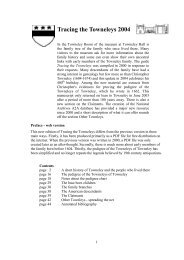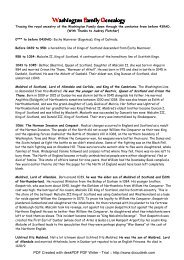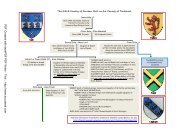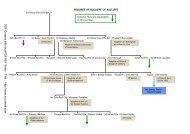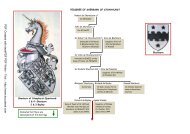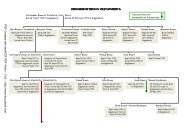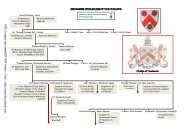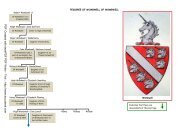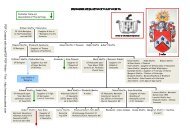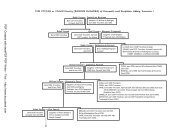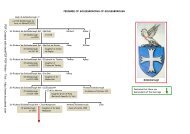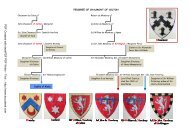SHIRBURNS of Stoneyhurst.pdf - Ingilby History
SHIRBURNS of Stoneyhurst.pdf - Ingilby History
SHIRBURNS of Stoneyhurst.pdf - Ingilby History
You also want an ePaper? Increase the reach of your titles
YUMPU automatically turns print PDFs into web optimized ePapers that Google loves.
As we have already seen, the Shireburnes had always endowed charitable concerns, linked<br />
directly to the propagation <strong>of</strong> their faith and family name. However, this drive reached new levels<br />
upon the succession to the lordship <strong>of</strong> Sir Nicholas and was, under him, formalised and injected<br />
with a new impetus. The need to maximise pr<strong>of</strong>its to sustain the displays <strong>of</strong> conspicuous<br />
consumption <strong>of</strong> the late 1690s and early 1700s, had effectively pauperised or driven out many <strong>of</strong><br />
Shireburnes’ tenants and labourers. Consequently, an interest in charity was based upon an entirely<br />
practical rationale and enabled the family to exercise a sense <strong>of</strong> paternalism in regard to their<br />
favoured servants, while weeding out <strong>of</strong> their estates those whose religious, or political views did<br />
not conform to their own. Despite the grand claims <strong>of</strong> his parents to have firmly endowed charitable<br />
bequests and almshouses, little had been achieved by the mid-1690s that was either durable or<br />
securely financed. Many <strong>of</strong> the promises for endowments remained simply that 38 . It fell to Sir<br />
Nicholas to confirm and provide for these grants, and to initiate a comprehensive programme <strong>of</strong><br />
building which would further stamp the landscape with physical evidence <strong>of</strong> the Shireburne<br />
presence.<br />
While his wife, Katherine, established an apothecary shop for “the distres’d sick and poor<br />
lame” inside the coach-house at Stonyhurst, he attempted for generate fresh wealth and stimulate<br />
new patterns <strong>of</strong> employment through investment in the spinning <strong>of</strong> Jersey wools. This latter project<br />
may have been a short term expedient to alleviate hardship on the northern side <strong>of</strong> the Ribble, for it<br />
was only actively pursued between April 1699 and August 1701. Prefiguring modern job-training<br />
37 “P.G.”, “Apropos <strong>of</strong> an Account Book”, Stonyhurst Magazine, no.368 (April, 1948), pp.126-127; Muir, op.cit. p.50;<br />
Skeat op.cit. Part I p.74; Stonyhurst College Archive, MS E.2/4/4 no.3.<br />
38 DDSt Box 1, items 9-11, 17-18 & 21; Box 94, item 2; Box 95, items 2 & 4.<br />
DDSt. 5., “Mr. Kemp’s Disbursements” op.cit. fols.1, 7 & 9.<br />
Stonyhurst College, E.2/4/4 no.3 & b.<br />
Gerard, Centenary Record, op.cit. pp.81-83; & Skeat, op.cit. Part I p.74.



